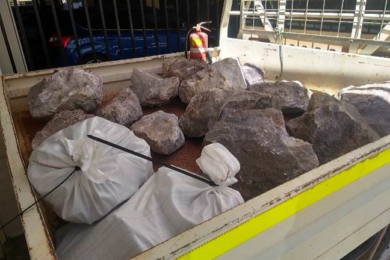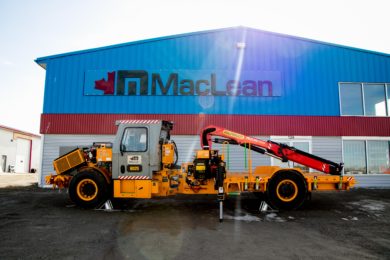Lithium Australia (LIT) develops cutting-edge processing technology for the manufacture of nano-scale battery cathode powders (via its subsidiary VSPC), the recycling of lithium-ion batteries and low-energy recovery of lithium and other metals from silicates with its 100% owned SiLeach hydrometallurgical process. Indeed, when compared to conventional lithium extraction processes, SiLeach has the potential to improve operating costs and accrue by-product credits while exhibiting a much lower energy footprint than conventional lithium extraction processes, LIT reports.
Currently, Lithium Australia is working towards construction of a large-scale pilot plant (LSPP) to demonstrate its SiLeach process at commercial scale and is pleased to provide this progress report.
• Front-end engineering and design (FEED) activities progressing as planned
• Detailed metallurgical test work demonstrates improved lithium recovery, further enhancing the SiLeach flowsheet
• Potential to produce high-quality fertiliser as a by-product enhances project economics.
LIT’s SiLeach process is a halide-accelerated, sulphuric acid digestion system, operated at atmospheric pressure. No roasting is required, significantly reducing the energy footprint when compared with conventional lithium extraction technology. The process also significantly benefits from a range of potential by-product credits.
As announced in February 2018, Lithium Australia has committed to developing a SiLeach LSPP and commenced FEED activities. This followed successful completion of a PFS on the ability of SiLeach technology to recover lithium chemicals and valuable byproducts from lithium micas. Developing an efficient processing technology to exploit such materials is a major achievement.
In many instances worldwide, lithium micas previously recovered during mining activities have been consigned to tailings dams and mine dumps as ‘waste’, due to a lack of appropriate metallurgical processing technology. SiLeach has the potential to unlock these ‘forgotten’ resources very economically.
Construction of the LSPP is a key step in proving SiLeach at a commercial scale. At full production SiLeach will facilitate the production of high-quality lithium chemicals from abundant non-brine mineral resources at a cost similar to those of brine producers – but without the environmental risks associated with conventional roasting or large evaporation ponds.
CPC Project Design heads the FEED study team. The FEED undertakings include preliminary equipment specifications, material selection, infrastructure, assessment of contracting strategies, discussion with vendors selected for the supply of specialised equipment, and logistic and scheduling activities. The FEED study is scheduled for completion in Q3 2018.
Detailed metallurgical test work – designed to confirm final process design criteria in key areas of the flowsheet, including beneficiation, acid digestion and removal of impurities – is well advanced. Meanwhile, material from two potential feed sources for the LSPP is being assessed for comminution and flotation characteristics. Results of completed UCS (unconfined compressive strength) tests averaged 40-60 MPa, indicating that the rock has moderate strength. The data will be used as the principal specification for contract crushing.
An abrasion index determination indicates that the feed-source material tested is non-abrasive; therefore should not lead to excessive wear on crushing and grinding equipment or process pipework.
Results of ball mill work index testing indicates that the energy requirements for grinding will be high. This was anticipated; historically, reducing micas to a fine particle size is energy-intensive, since their crystal structure forms in sheet-like habit that is difficult to grind. Design of the beneficiation circuit process will benefit from this data.
Flotation test work on a master composite of the expected LSPP feed has focused on identifying the optimum combination of flotation feed particle size, mass recovery, stage efficiency, concentrate grade and re-grind product particle size. Past test work indicated the importance of removing ultrafine particles from the flotation feed, since these can lead to poor mica recovery. Results of the latest test work show lithium recoveries of 86-94%, with 60-73% of the mass reporting to rougher concentrate at a grade of 3.0-3.6% Li2O (lithium oxide) from a feed grade of 2.5% Li2O.
Test work aimed at optimising acid digestion and removal of impurities has been conducted at ANSTO (Australian Nuclear Science and Technology Organisations) Minerals’ facility at Lucas Heights in New South Wales. This led to lithium leach extractions of more than 90% for lower-grade leach-feed mica samples, an improvement on those reported in the July 2017 PFS update (89% lithium on feed material of 4.5% Li2O).`
This result – achieved at a slightly higher sulphuric acid rate but a lower fluorspar addition rate – is significant in that higher recoveries have the potential to reduce capital costs in several unit processes of the LSPP. The work confirms that, overall, SiLeach recoveries are expected to be in excess of 86% lithium compared to previously reported results of 82.8% lithium.
Removal of impurities – including calcium, sulphur, fluorine, potassium, aluminium, silicon, rubidium and caesium compounds – is a critical step in the SiLeach process. Collectively, LIT, ANSTO Minerals and CPC have made an innovative improvement to the flowsheet. Confirmed by laboratory test work, it will increase the efficacy of lithium recovery from the pregnant liquor solution and improve the quality of the final lithium product. Further, it will enhance the quality of the potassium sulphate produced as a by-product (see below) and improve the water balance and lithium recycle loads. Moreover, it is anticipated that there will be some flexibility in the type of lithium products produced by the LSPP. This innovation will be the subject of a new patent application; further details will be released once the application has been lodged nationally and internationally.
Planning is also under way for a laboratory-scale pilot trial at ANSTO Minerals of the anticipated LSPP feed composition, using concentrates generated from the target sources. Intended to confirm final flowsheet selection and impurity removal unit processes, the trial should further reduce the risk profile of the LSPP and augment existing bench-scale test work results. The laboratory-scale pilot trial will generate enough lithium chemicals to provide product samples for potential off-take partners, those samples being representative of the commercial product.
Test work and vendor studies have strengthened the case for producing high-quality potassium sulphate as a by-product of the SiLeach process. Sold as SOP (sulphate of potash), it attracts a premium price compared to other commonly traded potassium chemical fertilisers, including MOP (muriate of potash), also known as potassium chloride.
SOP production has the potential to become a significant part of the current SiLeach value proposition, with around 12 t of readily marketable, high-quality SOP fertiliser produced for every tonne of LCE (lithium carbon equivalent) produced; this could both diversify and add around 20% to the SiLeach LSPP revenue stream.
Comment From LIT Managing Director Adrian Griffin: “The FEED study is advancing well and the improvements in lithium recovery are very encouraging. We’re pleased with the increase in confidence around by-product recovery, which is an important aspect of the SiLeach revenue stream – we believe it will allow us to produce lithium chemicals from minerals but at the same low unit cost as that of the brine producers.
“Preliminary discussions with potential off-take partners have been encouraging and our planned laboratory-scale pilot run at ANSTO, while aimed primarily at finalising the flowsheet for construction, will generate significant amounts of lithium chemical product for testing by potential off-take partners.”










